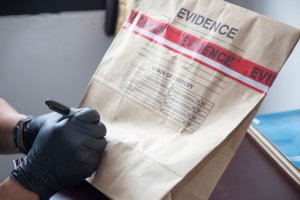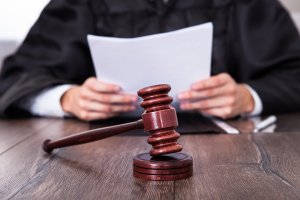
The burden of proof specifies the weight of evidence you must submit to prove your assertion in court. The specific nature of the burden of proof varies according to the circumstance, as described below. To understand your chances of winning your claim, you need to understand how the burden of proof applies to it.
This article covers the different burden of proof standards that appear in the personal injury context, as well as the types of evidence you can provide in service of your claim.
Personal Injury Burden of Proof Standards

In a personal injury claim, the burden of proof is usually “a preponderance of the evidence.” Under certain circumstances, however, the standard is “clear and convincing evidence.” Both of these standards incorporate an unavoidable element of subjectivity.
“A Preponderance of the Evidence”
A preponderance of the evidence is enough evidence to convince a reasonable person that your version of events is more than 50% likely to be accurate. Even a 51% likelihood or a 50.1% likelihood is enough. Put simply, the preponderance of the evidence standard is a “more likely than not” standard.
However, it’s not just “more evidence than the defendant submitted.” That might not be enough. Instead, your evidence must be enough to justify the court betting in favor of your claim.
Affirmative defenses
Normally, it is the victim (the “plaintiff”) who bears the burden of proof. The defendant doesn’t have to prove the plaintiff wrong. Instead, it is the plaintiff who must prove that their own claim is right. There is an exception, however, with an affirmative defense. If the defendant asserts an affirmative defense, they must bear the burden of proving it.
A traditional defense is just to simply deny the plaintiff the ability to prove their claim. The defendant might cross-examine their witness to call their credibility into question, for example. If they succeed, they will have denied you the ability to prove that your claim is true.
In an affirmative defense, by contrast, the defendant is saying, “Even if everything the plaintiff says is true, I am still not liable because [insert affirmative defense here].” Some popular affirmative defenses include:
- The statute of limitations for asserting the claim has already expired;
- The accident that produced the injury was mostly the plaintiff’s fault; or
- The plaintiff failed to mitigate their damages.
Texas law allows for many different affirmative defenses, depending on the nature of the plaintiff’s claim.
“Clear and Convincing Evidence”
Texas allows punitive damages in addition to economic and non-economic damages if the defendant’s behavior is so outrageous that justice demands a response.
You might demand punitive damages arising out of a car accident, for example, if the defendant deliberately caused the accident in a fit of ‘road rage.’
Courts are reluctant to award punitive damages, however. Fortunately, even if you lose your punitive damages claim, you can still win ordinary damages. To have any chance of winning punitive damages, you must prove your entitlement to punitive damages by “clear and convincing evidence.”
“Clear and convincing evidence” is an in-between standard. It requires a lot more evidence than the amount necessary to meet the “preponderance of the evidence” standard, but not as much evidence as you would need to meet the “beyond a reasonable doubt” standard.
“Beyond a Reasonable Doubt”
“Beyond a reasonable doubt” is the most famous standard for the burden of proof. It is also by far the most demanding standard to meet. Courts only use this standard for criminal prosecutions.
Admissible Evidence
The Texas Rules of Evidence, and interpretations thereof, govern exactly what evidence you can submit to Texas courts. Evidence not admissible in court will usually be ignored in settlement negotiations as well (with a car accident report being a notable exception). Typical evidence includes:
- Eyewitness testimony;
- Expert witness testimony;
- Statements from the parties;
- Medical records;
- Photographs and videos; and
- Documentary evidence (evidence of lost wages, for example).
Many other types of evidence are admissible as well.
A Skilled San Antonio Personal Injury Lawyer Can Help You Gather Evidence
An experienced San Antonio personal injury lawyer can help you gather evidence that will pass muster under the Texas Rules of Evidence. In addition, your lawyer should be able to weigh that evidence to determine whether it meets the burden of proof.
Furthermore, your lawyer should be able to use what evidence you have available to gain an advantage in settlement negotiations. Schedule a free initial consultation for George Salinas Injury Lawyers at (210) 225-0909 with an experienced personal injury lawyer as soon as you can.